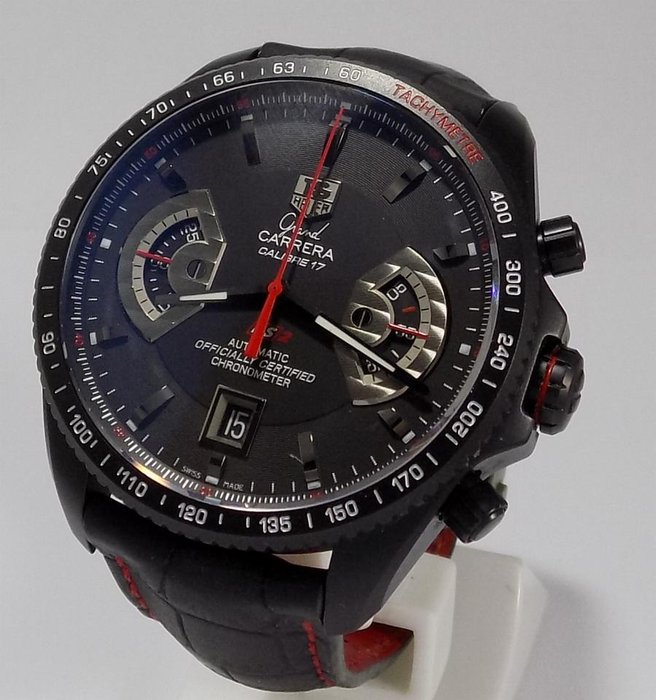

This lack of contrast makes it harder to differentiate between the two elements of the dial, so TAG Heuer has slightly sunken the inner-dial on the Titanium Carrera Calibre 36 to provide a visual separation.
#TAG HEUER GRAND CARRERA CALIBRE 36 FULL#
The Titanium model goes for the Full Black look and so has a Black outer ring and a Black inner-dial. It’s a very interesting dial, and one that works extremely well. The finishing on this dial is really special- you have the gloss finish of the outer ring, the beautiful star-burst finish of the inner dial and then the azurage pattern on the sub-dials. The two registers are set inside angled surrounds and finished with an azurage pattern. The Chronograph hand, however, is longer, again emphasising that this dial serves two purposes. The pushers and crown on the steel models are based on the Carrera 1887 design, while the Titanium model (below) gains a different look…think you’ve seen this before? You have- the Carrera McLaren MP4-12C (below) The crown features a rubber “over-moulding” and helps give the Titanium model its own look.Īs discussed earlier, the dial has a two-element design, with the steel models offering a contrasting outer ring and centre dial- Silver (White) and Anthracite or Black and Anthracite. Note how the minute hand only extends to the edge of the centre dial rather than to edge of the dial as would be the case with a traditional watch. The steel models have a combination of brushed and polished finishes, which off-set each-other nicely, for example, the polished underside of the bezel (above). There are two materials offered for the case, Stainless Steel and Titanium-carbide-coated Titanium. The case is one of the larger sizes offered for a Carrera at 43mm, and with a thickness of 14.93mm, which to put in context is slightly slimmer than the Carrera 1887, which comes in at 15.78mm. The use of contrasting colours further helps this distinction So think of the Carrera Calibre 36 as being a production watch inspired by the haute horlogerie Carrera Mikrograph and you have a good starting point for what to expect. This principle works superbly, but necessitates a two-part dial, with the inner part showing the normal hour-markers (the small triangles on the dial above). The answer was to revert to the classic stopwatch design of the 1960s that focused the dial on seconds rather than minutes/ hours, which is why the scale of the markers go from 1 to 100, and not 1 to 12 in the case of a traditional watch. Despite TAG Heuer first offering the El Primero (called the Calibre 36 by TAG Heuer) in 2002, it has taken more than 10 years for TAG Heuer to release the high-end movement in its top-selling model- the Carrera. Yet the result is far from retro, with the Carrera Calibre 36 looking modern and sporty, especially the Titanium-cased Racing model. And lastly we have a design layout that replicates Heuer’s Stopwatches of the 1960s, which shifted the focus of the dial away from minutes and towards seconds by moving the seconds counter to the most prominent part of the dial. Then of course there is the movement, the famous El Primero, introduced in 1969 and still made today by TAG Heuer’s sister company Zenith. The first of these ’60s icons is of course the Carrera itself, with the case design of the current range staying true to the very first Carrera of 1963. The TAG Heuer Carrera Calibre 36 Flyback is a study of both the past and the present, in that it combines three innovative ideas from the 1960s into a modern, contemporary chronograph.


 0 kommentar(er)
0 kommentar(er)
